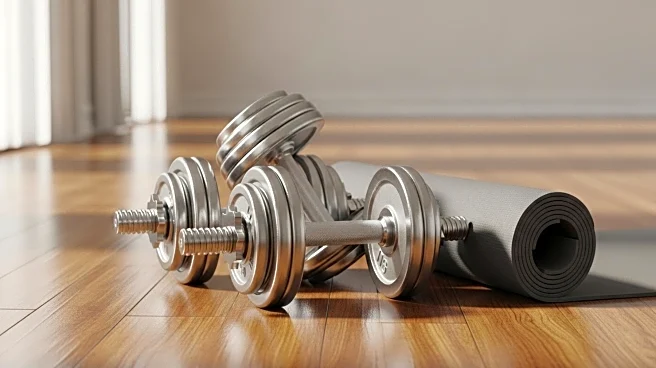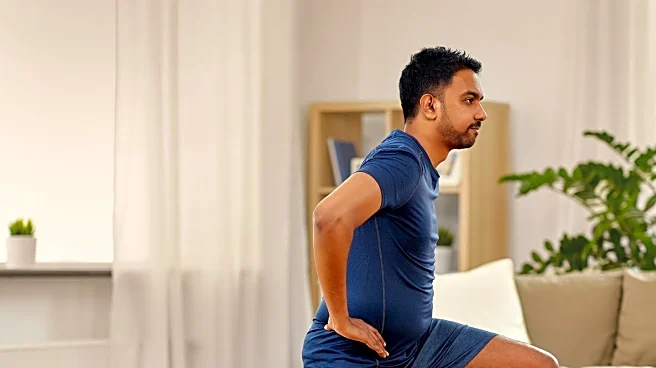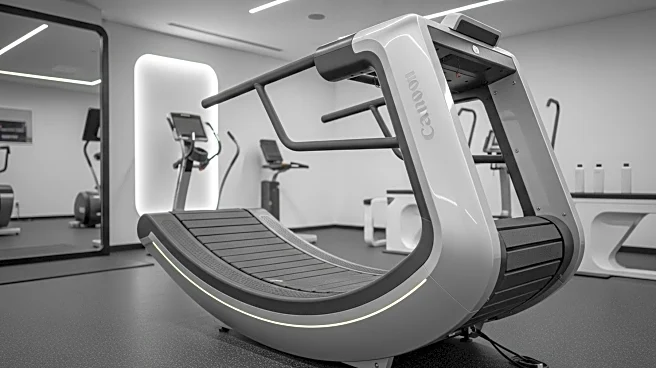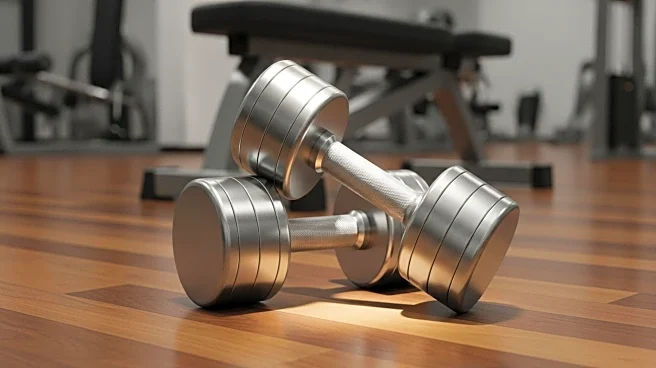What's Happening?
The wood chop exercise is gaining attention as an effective method for building core strength and stability. Performance coach Daniel Booth emphasizes its benefits in training the core across all three planes of movement: sagittal, frontal, and transverse. This exercise mimics the motion of swinging an axe, connecting the upper and lower body through the core, and is designed to enhance power, stability, and coordination. Booth explains that the wood chop targets the obliques and deep core stabilizers, while also engaging the shoulders, lats, glutes, and legs. The exercise is praised for training the body as a connected system, which is crucial for real-world movement and athletic performance.
Why It's Important?
The wood chop exercise is significant for its ability to improve rotational strength and stability, which are essential for everyday movements and athletic activities. By enhancing power transfer and movement quality, it supports injury prevention by strengthening muscles that protect the spine and pelvis from stress. This exercise is particularly beneficial for athletes and individuals seeking to improve their functional fitness, as it teaches efficient force transfer from the ground up. Incorporating wood chops into a fitness routine can lead to better coordination and balance, reducing the risk of injury and improving overall performance.
What's Next?
Fitness enthusiasts and trainers may consider integrating the wood chop exercise into their routines to maximize core strength and stability. Booth suggests starting with a half-kneeling position for beginners to focus on trunk control, and advancing to reverse wood chops or medicine ball slams for increased power development. As awareness of the exercise grows, it may become a staple in strength training programs, particularly for those aiming to enhance athletic performance and prevent injuries.
Beyond the Headlines
The wood chop exercise not only offers physical benefits but also promotes a holistic approach to fitness by encouraging the body to move as a unified system. This perspective aligns with modern fitness trends that prioritize functional movements over isolated exercises. As more individuals seek comprehensive fitness solutions, exercises like the wood chop may play a key role in shaping future training methodologies.











